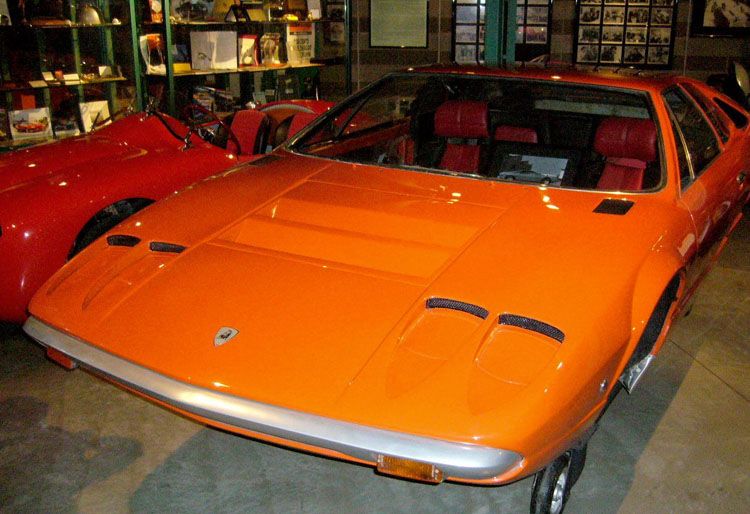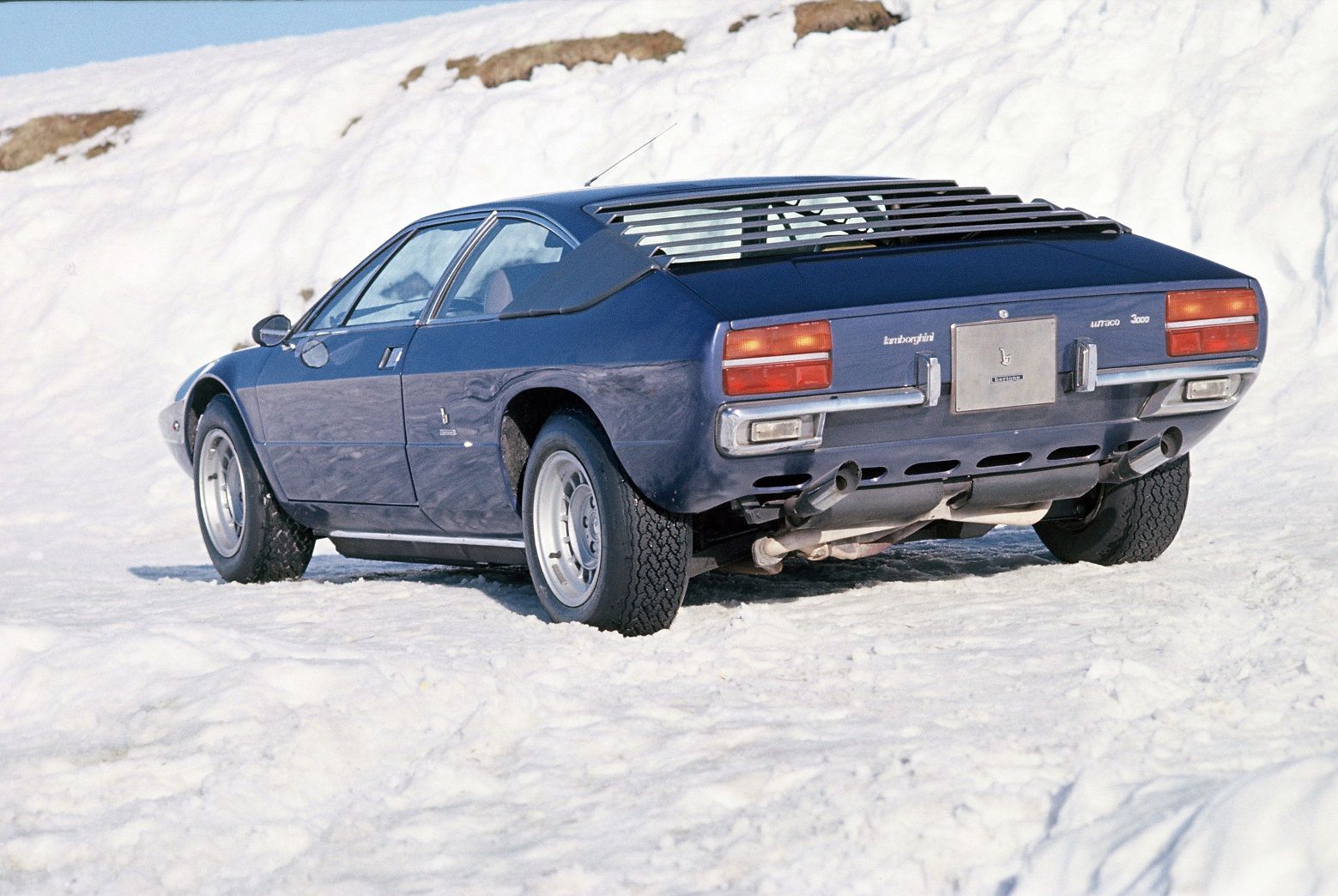Lamborghini Urraco: The Great Grandfather of the Huracan—Part I
Images: Archivio centrale dello Stato/Stile Bertone/Gautam Sen
When news about the very first Lamborghini, the 350 GTV was in the air, even before its unveiling in October 1963, Ferruccio Lamborghini had mentioned to certain members of the press that he had plans for a smaller V8 sports car. In fact, the very first indication of such thinking was in the January 16, 1963 edition of Corriere della Sera, in an article titled ‘Is Lamborghini building a racing car?’ in which the Italian newspaper wrote that “At the Lamborghini plant in Cento, which operates in the field of tractors and burners, Italian, German and Japanese technicians are working on two new engines for the automotive sector, one of 1500cc and another of 3500cc.”

When the 350 GTV though was unveiled in October-November, most of the descriptions and reports were of the V12 coupe, with references to the ‘smaller’ V8 reduced to the occasional. Yet, at the time of the unveiling of the TP400 chassis-mechanicals at the 1965 Turin Motor Show, Ferruccio Lamborghini, once again, brought up the idea of a smaller, more accessible sports car.


The fact that Porsche had sold 4,141 of the 911s in 1967 did not go unnoticed at Sant’ Agata. And that those numbers went up by 67 percent (to 6,934) in 1968, and then more than doubled (to 14,446) in 1969, no doubt, galvanized the team at Sant’ Agata to concentrate on developing their riposte to that German sportster, as well as the modestly successful Dino 206 GT.

If Lamborghini was going to design and develop another sports car, it had to be better than the Dino or the Porsche. So, if both the Dino and the Porsche had six cylinders, the Lamborghini needed to be one segment superior: therefor a compact V8.




By August 1968, Giampaolo Dallara had left Automobili Ferruccio Lamborghni to design racing cars for Alejandro de Tomaso, and Paolo Stanzani (read about him: https://magazine.derivaz-ives.com/when-i-met-one-of-my-heroes-the-legendary-paolo-stanzani/), who had taken over the operational role at the Italian supercar maker, also took on the additional responsibility of leading the engineering team. Under Stanzani, the ‘reparto esperienze’ team expanded, as several young technicians were hired.

The most noteworthy amongst them were the threesome of Oliviero Pedrazzi, Achille Bevini and Tiziano Benedetti, all brilliant technicians. Even if Benedetti was seven years younger than the other two, he quickly gravitated to them, and in no time, the three were nicknamed the ‘three musketeers’.

With this young and dynamic team of Pedrazzi, Bevini and Benedetti aiding Stanzani, it was an opportunity for the latter to stamp his mark at Lamborghini. To give vent to his technical ideas and philosophies, one of the first projects that Stanzani set about working on, with the onset of the post-Dallara period, was the development of Lamborghini’s baby supercar, codenamed 111.

The initial thinking was for a small car, smaller even than the compact 4.23 meters (166.5-inches) long Dino 206 GT and powered by a light and efficient V8 of modest capacity, with the engine located amidships like in the trend-setting Miura, with seating for just two.
Since the Miura, Stanzani had had an excellent working relationship with Bertone’s Marcello Gandini (https://magazine.derivaz-ives.com/marcello-gandini-cutting-edge-automotive-design/), and he was confident that between the two of them they could come up with something that would, once again, make the world sit up and take note of its packaging, engineering, and design innovativeness.

The first set of drawings that Marcello Gandini drew up for project 111 was that of a very sleek wedge-like design, barely four meters long, which was a ‘production worthy’ design evolution of the Alfa Romeo Carabo concept’s radical form that Bertone’s chief designer had prepared in barely ten weeks’ time for the Paris Motor Show of October 1968.
With a somewhat similar wheelbase to that of the Carabo’s 2.35 meters, an overall length of around four meters, but with a height which was more pronounced than the Carabo’s exceptionally low 0.99 meters, the design that Gandini sketched out was radically different than any other street legal sports car in production then.

In fact, a wilder concept with a spoiler atop the B-pillar was toned down to a more practical version. The design process progressed to the making of a mascherone, the buck from which the panels for the body used to be shaped from. But it seems to have stopped at that, as Gandini had a rethink of the design, which evolved into an even more aggressive wedge-like arrowhead of a shape, with subtle haunches giving the form greater muscularity.
All three of the Carabo-inspired proposals featured deep and large vertical air-intake vents like those of the Alfa concept, on the flanks, just aft of the doors, as well as door glasses which featured small inset winding windows. Stylized slats were another feature common to all the three proposals. The wildest of them all, the one with the spoiler over the roof (a feature which would later appear on the Lancia Stratos HF) also proposed a scissor-action door opening system.

In the meantime, at Lamborghini, work was going on for the development of the powertrain, codenamed L240. Oliviero Pedrazzi went about designing and developing a little jewel of an engine: a very compact and very advanced 90-degree V8 of just 2463cc (150 cu n), which developed an impressive 220bhp, as compared to the Dino 246 GT’s 195bhp (the 246 had replaced the 206 by ‘69), and Porsche’s most powerful 911 then, the S’ 203bhp.
This was achieved in a simple and economical way: with a single overhead camshaft per cylinder head, driven by external toothed rubber belts and two valves per cylinder. The compression ratio was 10.4:1, while aspiration was through four twin-choke Weber carburetors. Although maximum power was achieved at 7500rpm, the V8 could rev happily up to 9000rpm. With maximum torque of 225Nm at 5750rpm—though most of it available from a little above 1000rpm—Lamborghini’s V8 was one of the most flexible of all engines then.

A compact five-speed gearbox was mated to the rear of the engine, at the left, with the entire combo installed transversely, just ahead of the rear axle line. The entire drivetrain ensemble weighed just 236kgs, as most of it was in lightweight alloy. To save up on space—and weight—Stanzani elected to go with the increasingly popular MacPherson strut suspension systems, which had begun to prove its efficiency on cars like Datsun’s iconic 240Z, amongst others. Large, ventilated disc brakes (from BMW) were used on all four corners. With the rack and pinion steering system mounted ahead of the firewall, Stanzani was able to free up quite a bit of space between the axles.
For the rest of the story, tune in tomorrow!
Comments
Sign in or become a deRivaz & Ives member to join the conversation.
Just enter your email below to get a log in link.
